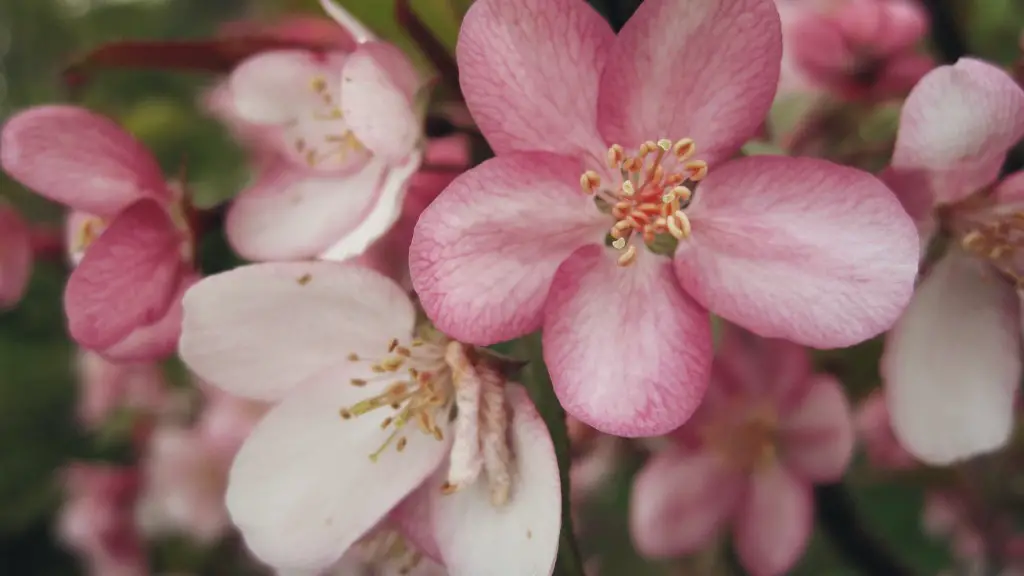Lemon tree flowers can provide both beauty and an array of tantalizing fruits. If you’re looking to have luscious and fragrant flowers on your lemon tree, there are a few strategies to make it happen. One of the most important steps in inducing flower production is the proper pruning of your lemon tree, as it affects both its shape and the number of flowers it produces.
Firstly, you want to prune your lemon tree at the right time. Doing it too early or too late in the season may cause night frost damage, which will reduce the number of flowers that the tree can produce. Prune the lemon tree when it has just stopped flowering, usually in the late winter to early spring. Use clean and sharp shears and always prune the inner limbs of the tree first.
Adequate nutrients are also an important factor when it comes to making your lemon tree flower. Fertilize the lemon tree twice a month during the growing season with a nitrogen-rich fertilizer. Stop fertilizing in the late summer when the fruits are nearly mature. Additionally, cover the soil around the root zone with a 2- to 3-inch layer of mulch to protect it from weeds and retain moisture.
You also want to make sure your lemon tree has excellent drainage and a fair amount of sunlight. The roots and leaves of the tree need at least 6-8 hours of direct sun and the soil should be lightly moist. Plant the tree in a sheltered area that’s away from strong winds and any kind of excessive cold.
Finally, pests and diseases can lead to an unhealthy lemon tree and flower production. Monitor your lemon tree for any signs of disease or pests to force inoculation or to control overpopulation. Common pests that can attack lemon trees are the scale insects, mealybugs, aphids, whiteflies, and spider mites. To help reduce their populations, use a diluted insecticidal soap or other natural repellents such as neem oil.
Monitoring Plant Health
Your overall plant health needs to be monitored as part of producing flowers on a lemon tree. Good plant health includes adequate water, sunlight, and nutrients. Be sure to water your lemon tree often but not too much, and make sure the soil drains well and is never soggy. Also, keep the weeds around the tree down so the lemon tree has access to more water and nutrients.
Monitoring the amount of sunlight your lemon tree gets is also important. If the tree is in an area with too much shade, it won’t produce flowers. If the tree is in partial shade, you may need to arrange for additional sources of light. Good sources of additional light include metal halide or sodium vapor lamps or a grow light system.
Adequate nutrition is also critical for the health of a lemon tree. Planting your lemon tree in a soil rich in nutrients will provide a healthy environment for it to flower. A soil analysis is recommended to make sure the soil is providing the right nutrients for the tree. If necessary, you can use a nutrient-rich compost to supplement the soil.
Controlling Insect Populations
Insects can be a major problem for lemon tree production, as they can damage both the flowers and the fruit. If you notice any insect damage to the tree, take appropriate action to control the population. Insecticides can be used to control the population of insects, but it’s important to use the correct one for the type of insect. For mealybugs and aphids, for example, a broad-spectrum insecticide that can be sprayed directly on the tree may be the best option.
Insect populations can also be controlled through the use of natural predators such as ladybugs, lacewings, and predatory mites. These predators eat insect pests and can help keep the populations under control. You can also use a combination of both predators and insecticides to keep the insect population under control.
In some cases, the use of chemical insecticides may not be necessary. Pruning the tree to keep it open, and making sure the tree’s environment is healthy, can help keep insect populations under control. Be sure to trap any pests that may be in the tree and monitor the area regularly to detect any new insect activity.
Irrigation Management
Irrigation is an important component of ensuring your lemon tree produces flowers. Trees need water to grow, and insufficient water will cause the lemon tree to drop the flowers it has. Monitor your tree’s water consumption and adjust the schedule accordingly if the tree isn’t getting enough water. A drip irrigation system can be used to provide the lemon tree with an adequate amount of water without overwatering.
When irrigating the lemon tree, make sure to focus on providing water to the root zone and avoid waterlogged soils. Aim to water the lemon tree slowly and deeply to create a good root system. Water in the early morning and avoid watering in the evening to prevent the growth of fungi on the lemon tree’s leaves.
You should also be aware of the pH levels of your soil. Lemon trees prefer a soil pH between 6.5 and 7.0, and you should take necessary action if the soil falls outside this range. You can use a soil testing kit to find out the pH of your soil and, if necessary, use lime to increase the pH of the soil.
Fertilization and Pest Treatment
Fertilization and pest treatment are important components of ensuring your lemon tree flowers. Regular fertilization encourages thetree to produce healthy, fragrant flowers. Use a nitrogen-rich fertilizer to give the tree an extra boost in the growing season and reduce fertilization as the fruit matures.
Pest control is also important in order to keep the pests from damaging the flowers and infesting the tree. Monitor the tree regularly for pests and use the appropriate type of treatment to control the populations. Natural predators, insecticides, and insect traps can all be used to help manage the insect populations.
The need for pest control and fertilization depends on the type of lemon tree you have. Some varieties are more prone to pests and disease, and require more frequent pest control and fertilization. You should consult with an expert to determine the best way to treat your lemon tree.
Disturbing the Lemon Tree
Another important factor for ensuring your lemon tree is healthy and produces flowers is to disturb the tree. If you want the tree to flower, you’ll need to upset its routine and stimulate it back into growth. Disturb the tree by pruning, as this will cause the tree to respond to the change by producing flowers.
You can also disturb the tree by shaking the leaves, which will cause it to react to the disturbance and start to flower. It’s important to do this in conjunction with other strategies such as proper pruning, adequate water and nutrients, and pest control. This will encourage the lemon tree to flower more often and create larger flowers.
When disturbing the lemon tree, be sure to be gentle and only shake the branches for a few seconds. Too much shaking will cause the tree to focus its energy on creating more stems and leaves, instead of flowers.
Conclusion
To make your lemon tree flower, you’ll need to provide it with the right environment. Prune the tree properly and at the right time, fertilize it with a nitrogen-rich fertilizer, provide it with adequate sunlight and water, and keep pests and diseases under control. Monitor the tree’s health, control insect populations, irrigate the tree properly, and disturb the tree to encourage the production of flowers. With the right strategies, you’ll soon be rewarded with a lemon tree that’s in full bloom.




